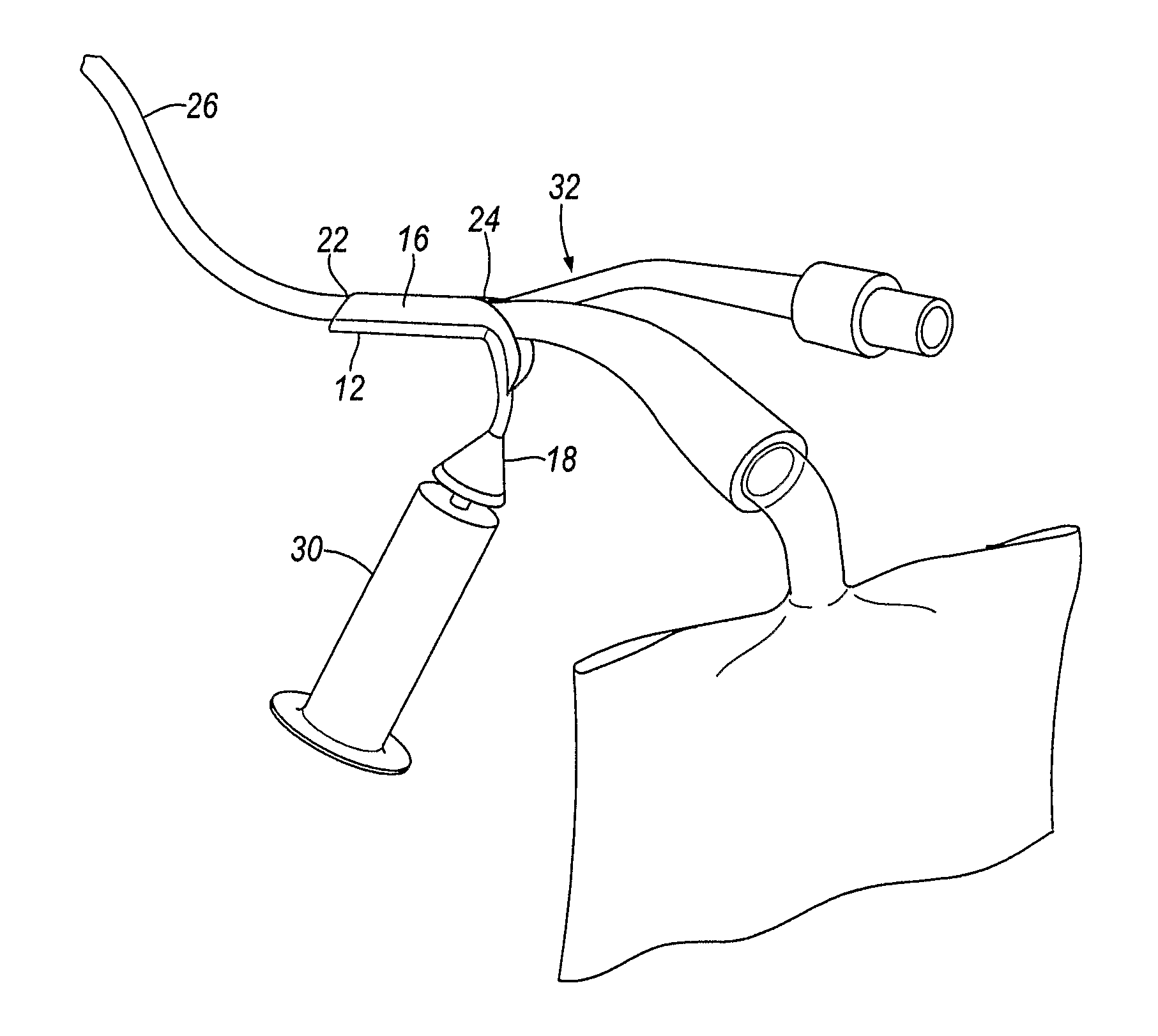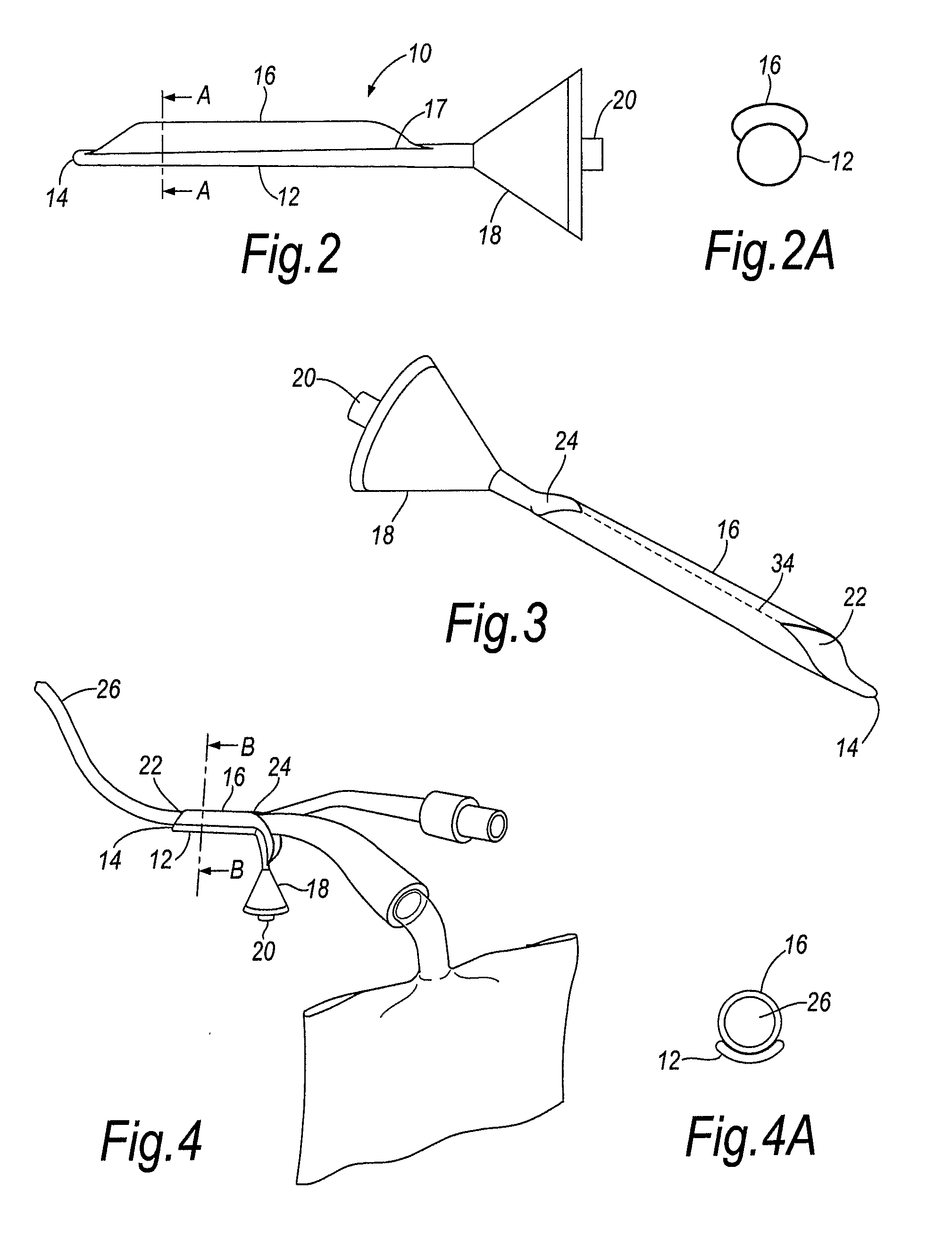Deploying linings in body cavities
a technology for linings and body cavities, applied in the direction of suction devices, wound drains, catheters, etc., can solve the problems of putting a considerable additional cost burden on the healthcare system, unable to use devices with intermittent rather than indwelling catheters, and affecting the quality of life of patients
- Summary
- Abstract
- Description
- Claims
- Application Information
AI Technical Summary
Benefits of technology
Problems solved by technology
Method used
Image
Examples
Embodiment Construction
[0033]Referring initially to FIGS. 2 and 3, a lining device is shown in its everted state generally at 10. The lining device 10 comprises a chamber 12 that is closed at one end 14. The chamber 12 extends longitudinally in its everted state. A liner 16 is connected along its length to the chamber 12, for example by welding or any other suitable form of connection at 17.
[0034]At the opposite end of the chamber 12 to the closed end 14 a holding container 18 is attached. The holding container 18 is a hollow frusto-conical rigid part having a generally planar base (not shown) at its wider end. A fluid pipe 20 allows fluid to pass into and out of the holding container 18 through an aperture in the base.
[0035]The chamber 12 is formed from flexible material such as latex or polyurethane. The liner 16 may be formed from the same flexible material as the chamber 12. The liner 16 may be integrally formed with the chamber 12 or may be formed separately and subsequently attached thereto.
[0036]Wh...
PUM
 Login to View More
Login to View More Abstract
Description
Claims
Application Information
 Login to View More
Login to View More - R&D
- Intellectual Property
- Life Sciences
- Materials
- Tech Scout
- Unparalleled Data Quality
- Higher Quality Content
- 60% Fewer Hallucinations
Browse by: Latest US Patents, China's latest patents, Technical Efficacy Thesaurus, Application Domain, Technology Topic, Popular Technical Reports.
© 2025 PatSnap. All rights reserved.Legal|Privacy policy|Modern Slavery Act Transparency Statement|Sitemap|About US| Contact US: help@patsnap.com



